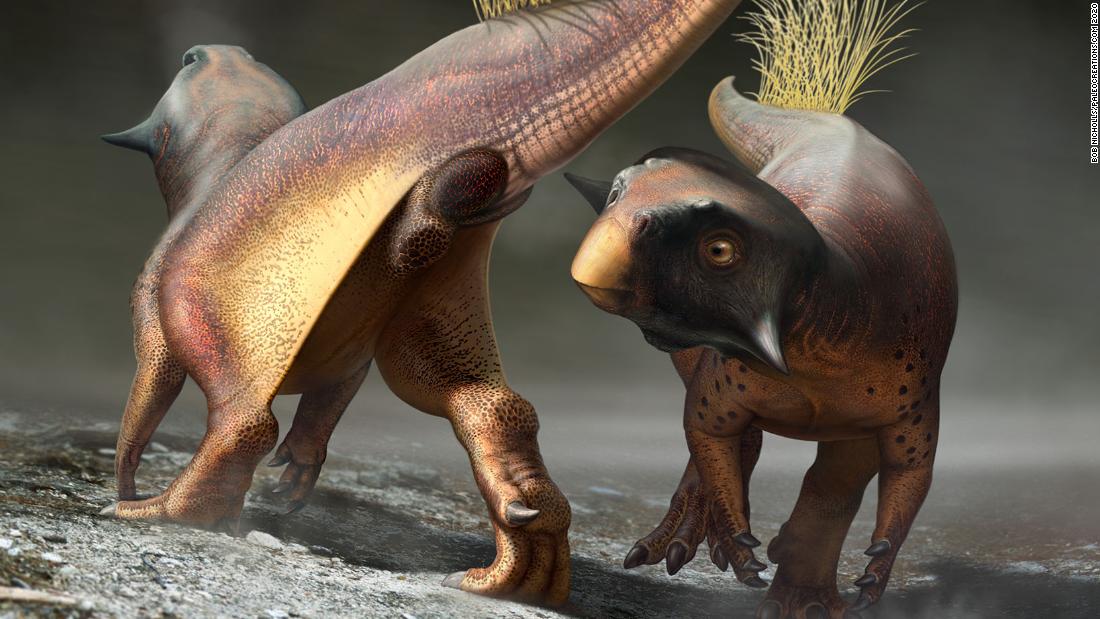
However, a fossil from China of a Psittacosaurus is so well-preserved that the opening the dinosaur the size of a Labrador used to urinate, defecate and reproduce is visible, allowing paleontologists to study it for the first time.
While it doesn’t provide concrete answers about how dinosaurs reproduced, it does provide some hints.
“We don’t have dinosaur fossils that you can trust have been caught red-handed,” said Jakob Vinther, a paleontologist and senior lecturer in the School of Earth Sciences at the University of Bristol.
What we know is “based on natural history, where we compare it to living groups of animals.”
While most mammals have separate holes for bodily functions, many other animals – birds and reptiles included – have only one, and this one is known as the cloaca.
The fossilized cloaca confirms that dinosaurs had one, but it does not resemble that of other living animals.
“It’s very unique. Most of the cloacas form some sort of slit. Sometimes it’s a vertical slit, sometimes it’s a smiley face, sometimes it’s a sour face. This thing has a V-shaped structure with some nice flared lips and there is not a living group of animals with such a morphology, “said Vinther.” It looks a bit like crocodiles, but is still unique. “
The study, published Tuesday in the journal Current Biology, said that large, pigmented lobes flanking the opening could have musky scent glands, as seen in live crocodiles and alligators.
In addition, the outer edges of the cloaca are highly pigmented with melanin. While they’re not sure what color it was, it likely would have contrasted with the dinosaur’s pale underbelly, Vinther said.
This characteristic pigmentation could mean that the vent was used to display and signal, similar to live baboons and some breeding salamanders.
The fossil is on display at the Senckenberg Museum of Natural History in Frankfurt, Germany, but was found in a fossil-rich area of Liaoning in northern China.
Vinther had previously worked on the fossil in 2016 and reconstructed the dinosaur’s color patterns, and it wasn’t until the end of that study that he realized the cloaca was really well-preserved, he said.
In animals with cloacal vents, the genitals are tucked away in the body and have not been preserved, so it is not known whether this particular dinosaur was male or female.
Most birds, the only living relative of dinosaurs, mate by “cloacal kissing” – by compressing their openings. Some paleontologists think dinosaurs mated in this way.
However, Vinther believes this dinosaur would have had a penis – the fossilized opening is more like that of a crocodile, and there are some birds, such as ostriches and ducks, that also have penises.
“As far as we can tell, this cloaca wouldn’t have been suitable for cloaca pillow,” Vinther said. “It looks like it would have been penetrative sex.”
